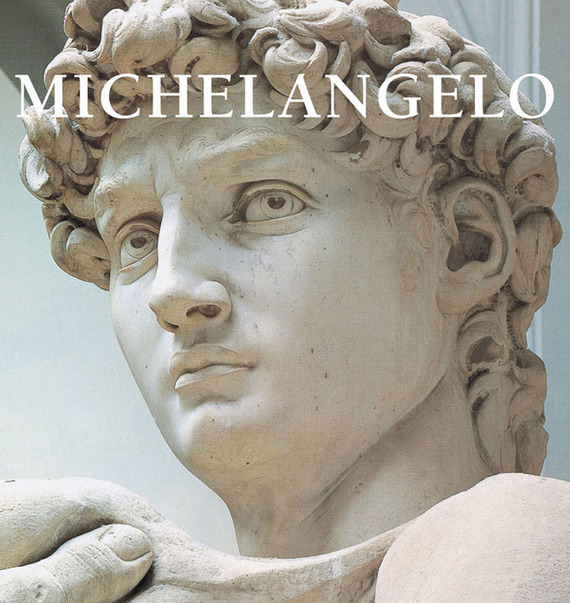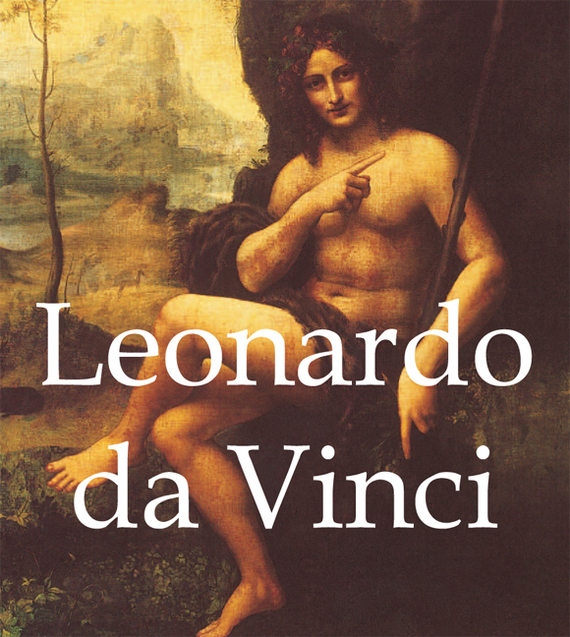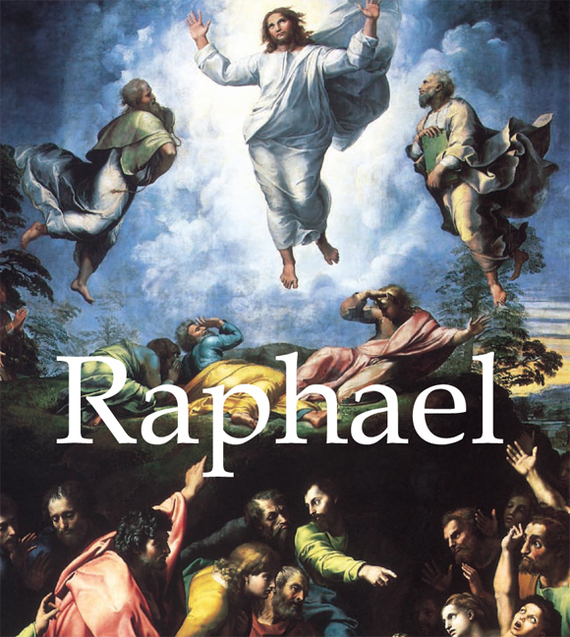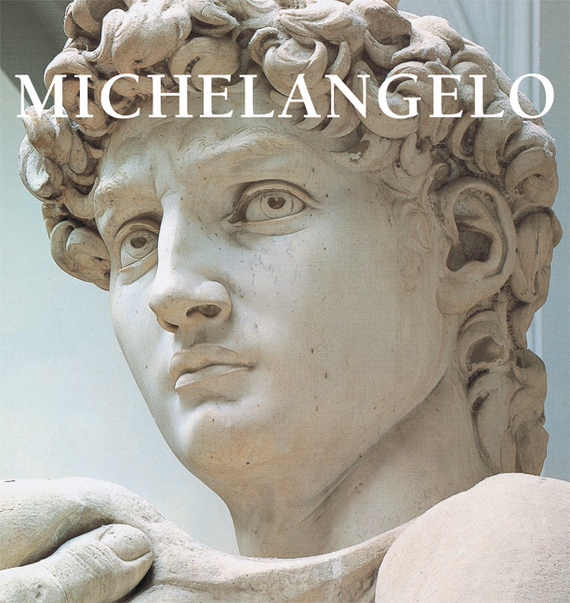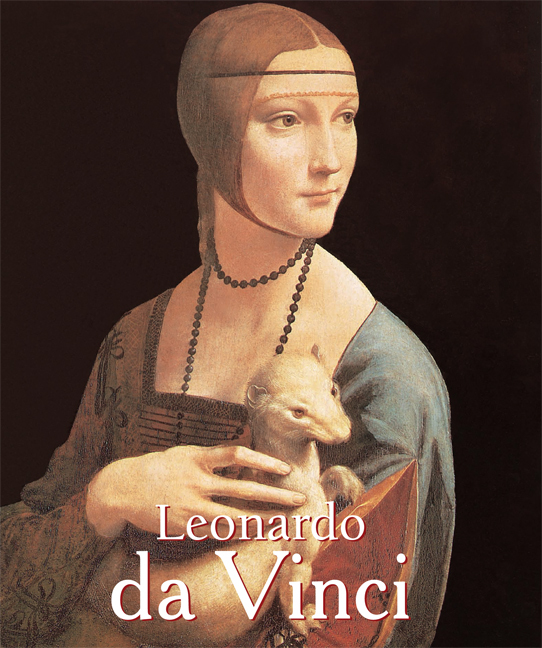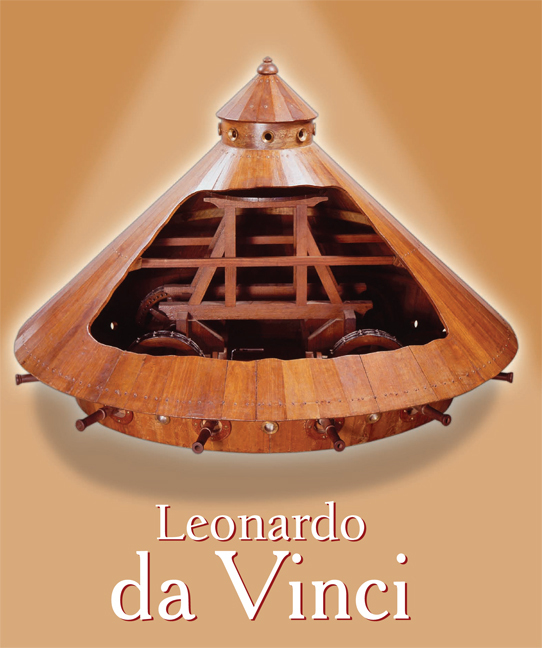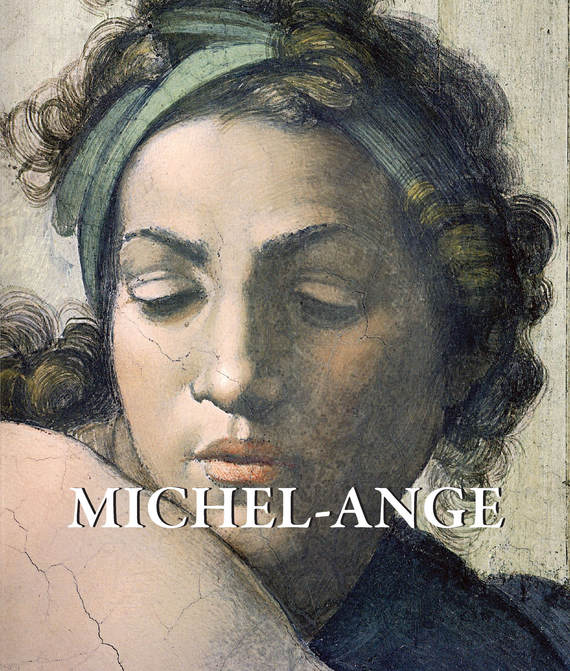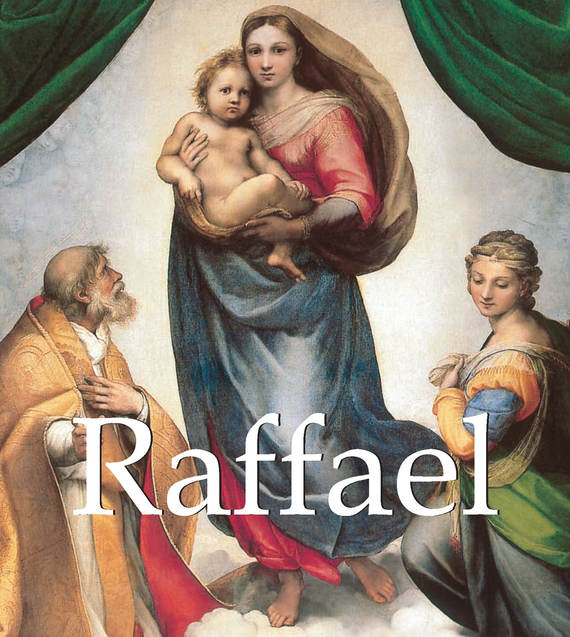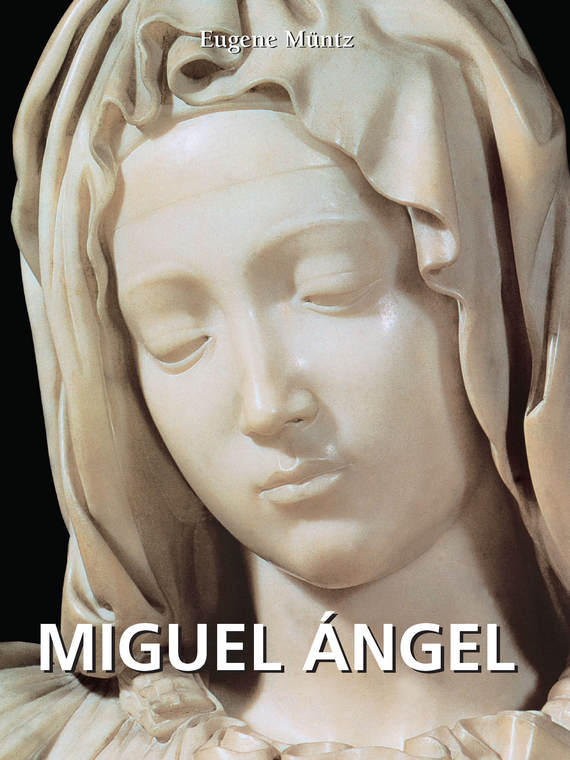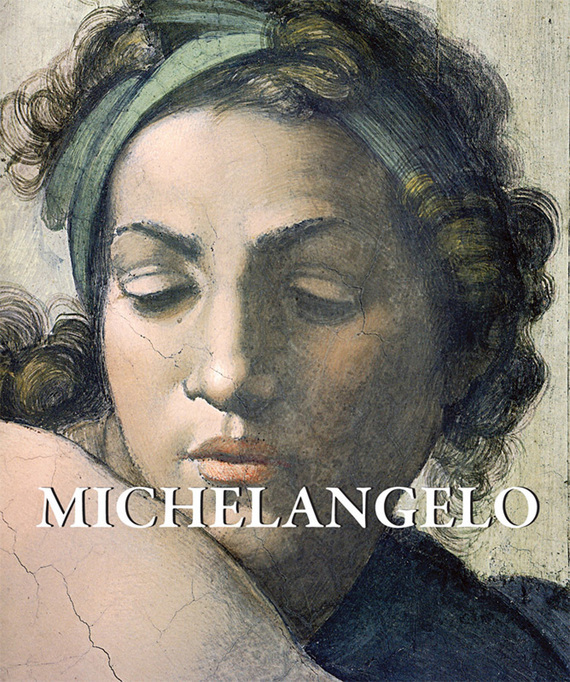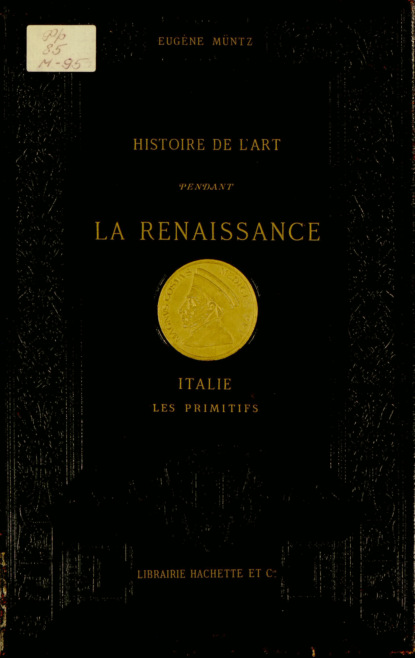Рубрикатор
-
-
Черновики
-
Бизнес-Книги
- Поиск работы, карьера
- Управление, подбор персонала
- Маркетинг, PR, реклама
- Банковское дело
- Ценные бумаги, инвестиции
- Бухучет, налогообложение, аудит
- ВЭД
- Экономика
- Отраслевые издания
- Корпоративная культура
- Личные финансы
- Недвижимость
- О бизнесе популярно
- Малый бизнес
- Делопроизводство
- Зарубежная деловая литература
- Фантастика
- Любовные романы
- Приключения
- Детские книги
- Наука, Образование
- Справочники
- Публицистика
- Религия
- Юмор
- Боевики
- Indo-European languages
- The arts
- Humanities
- Health & personal development
- Современная проза
- Зарубежная литература
- Фэнтези
- Искусство
- Книги по психологии
- Повести, рассказы
- Детективы
- Поэзия, Драматургия
- Компьютеры
- Дом, Семья
- Периодические издания
- Классика
-
Черновики
Eug?ne M?ntz
Michelangelo, like Leonardo, was a man of many talents; sculptor, architect, painter and poet, he made the apotheosis of muscular movement, which to him was the physical manifestation of passion. He moulded his draughtsmanship, bent it, twisted it, and stretched it to the extreme limits of possibility. There are not any landscapes in Michelangelo's painting. All the emotions, all the passions,...
Michelangelo, like Leonardo, was a man of many talents; sculptor, architect, painter and poet, he made the apotheosis of muscular movement, which to him was the physical manifestation of passion. He moulded his draughtsmanship, bent it, twisted it, and stretched it to the extreme limits of possibility. There are not any landscapes in Michelangelo's painting. All the emotions, all the passions,...
Leonardo’s early life was spent in Florence, his maturity in Milan, and the last three years of his life in France. Leonardo’s teacher was Verrocchio. First he was a goldsmith, then a painter and sculptor: as a painter, representative of the very scientific school of draughtsmanship; more famous as a sculptor, being the creator of the Colleoni statue at Venice, Leonardo was a man of...
Leonardo’s early life was spent in Florence, his maturity in Milan, and the last three years of his life in France. Leonardo’s teacher was Verrocchio. First he was a goldsmith, then a painter and sculptor: as a painter, representative of the very scientific school of draughtsmanship; more famous as a sculptor, being the creator of the Colleoni statue at Venice, Leonardo was a man of...
Michelangelo, like Leonardo, was a man of many talents; sculptor, architect, painter and poet, he made the apotheosis of muscular movement, which to him was the physical manifestation of passion. He moulded his draughtsmanship, bent it, twisted it, and stretched it to the extreme limits of possibility. There are not any landscapes in Michelangelo's painting. All the emotions, all the passions,...
Raphael was the artist who most closely resembled Pheidias. The Greeks said that the latter invented nothing; rather, he carried every kind of art invented by his forerunners to such a pitch of perfection that he achieved pure and perfect harmony. Those words, “pure and perfect harmony,” express, in fact, better than any others what Raphael brought to Italian art. From Perugino, he...
Michelangelo, like Leonardo, was a man of many talents; sculptor, architect, painter and poet, he made the apotheosis of muscular movement, which to him was the physical manifestation of passion. He moulded his draughtsmanship, bent it, twisted it, and stretched it to the extreme limits of possibility. There are not any landscapes in Michelangelo's painting. All the emotions, all the passions,...
Leonardo’s early life was spent in Florence, his maturity in Milan, and the last three years of his life in France. Leonardo’s teacher was Verrocchio. First he was a goldsmith, then a painter and sculptor: as a painter, representative of the very scientific school of draughtsmanship; more famous as a sculptor, being the creator of the Colleoni statue at Venice, Leonardo was a man of...
Leonardo’s early life was spent in Florence, his maturity in Milan, and the last three years of his life in France. Leonardo’s teacher was Verrocchio. First he was a goldsmith, then a painter and sculptor: as a painter, representative of the very scientific school of draughtsmanship; more famous as a sculptor, being the creator of the Colleoni statue at Venice, Leonardo was a man of...
Michelangelo, like Leonardo, was a man of many talents; sculptor, architect, painter and poet, he made the apotheosis of muscular movement, which to him was the physical manifestation of passion. He moulded his draughtsmanship, bent it, twisted it, and stretched it to the extreme limits of possibility. There are not any landscapes in Michelangelo's painting. All the emotions, all the passions,...
Michel-Ange (Michelangelo Buonarroti) (Caprese, 1475 – Rome, 1564) Michel-Ange, comme L?onard de Vinci, avait plusieurs cordes ? son arc et ?tait ? la fois sculpteur, architecte, peintre et po?te. Il porta ? leur apoth?ose le mouvement musculaire et l'effort, ?quivalents plastiques de la passion, ? ses yeux. Il fa?onna son dessin, le poussant jusqu'aux limites extr?mes des possibilit?s de...
Michel-Ange (Michelangelo Buonarroti) (Caprese, 1475 – Rome, 1564) Michel-Ange, comme L?onard de Vinci, avait plusieurs cordes ? son arc et ?tait ? la fois sculpteur, architecte, peintre et po?te. Il porta ? leur apoth?ose le mouvement musculaire et l'effort, ?quivalents plastiques de la passion, ? ses yeux. Il fa?onna son dessin, le poussant jusqu'aux limites extr?mes des possibilit?s de...
Rapha?l (Raffaello Sanzio)(Urbino, 1483 – Rome, 1520) Rapha?l est l'artiste moderne qui ressemble le plus ? Phidias. Les Grecs eux-m?mes disaient que ce dernier n'avait rien invent?, mais qu'il avait port? toutes les formes d'art cr??es par ses pr?d?cesseurs ? un tel degr? de perfection, qu'il atteignit l'harmonie pure et parfaite. Cette expression «harmonie pure et parfaite » exprime, en...
Michel-Ange (Michelangelo Buonarroti) (Caprese, 1475 – Rome, 1564) Michel-Ange, comme L?onard de Vinci, avait plusieurs cordes ? son arc et ?tait ? la fois sculpteur, architecte, peintre et po?te. Il porta ? leur apoth?ose le mouvement musculaire et l'effort, ?quivalents plastiques de la passion, ? ses yeux. Il fa?onna son dessin, le poussant jusqu'aux limites extr?mes des possibilit?s de...
Michel-Ange (Michelangelo Buonarroti) (Caprese, 1475 – Rome, 1564)
Michel-Ange, comme L?onard de Vinci, avait plusieurs cordes ? son arc et ?tait ? la fois sculpteur, architecte, peintre et po?te. Il porta ? leur apoth?ose le mouvement musculaire et l'effort, ?quivalents plastiques de la passion, ? ses yeux. Il fa?onna son dessin, le poussant jusqu'aux limites extr?mes des possibilit?s de...
Michel-Ange (Michelangelo Buonarroti) (Caprese, 1475 – Rome, 1564) Michel-Ange, comme L?onard de Vinci, avait plusieurs cordes ? son arc et ?tait ? la fois sculpteur, architecte, peintre et po?te. Il porta ? leur apoth?ose le mouvement musculaire et l'effort, ?quivalents plastiques de la passion, ? ses yeux. Il fa?onna son dessin, le poussant jusqu'aux limites extr?mes des possibilit?s de...
Michelangelo war, genau wie Leonardo, ein “universeller” K?nstler: Maler, Baumeister, Bildhauer und Dichter. Er war der Hauptmeister der italienischen Hochrenaissance und Wegbereiter des Manierismus. Seine Vorliebe galt der als Ausdruck der Leidenschaft angesehenen Skulptur. Nach Landschaften sucht man bei ihm vergeblich. Alles, was den Menschen ausmacht, seine Gef?hle, Leidenschaften,...
Michelangelo war, genau wie Leonardo, ein “universeller” K?nstler: Maler, Baumeister, Bildhauer und Dichter. Er war der Hauptmeister der italienischen Hochrenaissance und Wegbereiter des Manierismus. Seine Vorliebe galt der als Ausdruck der Leidenschaft angesehenen Skulptur. Nach Landschaften sucht man bei ihm vergeblich. Alles, was den Menschen ausmacht, seine Gef?hle, Leidenschaften,...
Raffael (1483-1520), ein Zeitgenosse Leonardo da Vincis und Michelangelos und gleichzeitig der j?ngste dieser drei „Titanen“ der Hochrenaissance, war ?ber lange Zeit der Inbegriff des dynamischen, jungen Malergenies – eine Sichtweise, die durch seinen fr?hen Tod mit 37 Jahren noch verst?rkt wurde. Seine Sixtinische Madonna wurde oft als das bedeutendste Kunstwerk des europ?ischen...
Michelangelo war, genau wie Leonardo, ein “universeller” K?nstler: Maler, Baumeister, Bildhauer und Dichter. Er war der Hauptmeister der italienischen Hochrenaissance und Wegbereiter des Manierismus. Seine Vorliebe galt der als Ausdruck der Leidenschaft angesehenen Skulptur. Nach Landschaften sucht man bei ihm vergeblich. Alles, was den Menschen ausmacht, seine Gef?hle, Leidenschaften,...
Michelangelo war, genau wie Leonardo, ein “universeller” K?nstler: Maler, Baumeister, Bildhauer und Dichter. Er war der Hauptmeister der italienischen Hochrenaissance und Wegbereiter des Manierismus. Seine Vorliebe galt der als Ausdruck der Leidenschaft angesehenen Skulptur. Nach Landschaften sucht man bei ihm vergeblich. Alles, was den Menschen ausmacht, seine Gef?hle, Leidenschaften,...
Michelangelo war, genau wie Leonardo, ein “universeller” K?nstler: Maler, Baumeister, Bildhauer und Dichter. Er war der Hauptmeister der italienischen Hochrenaissance und Wegbereiter des Manierismus. Seine Vorliebe galt der als Ausdruck der Leidenschaft angesehenen Skulptur. Nach Landschaften sucht man bei ihm vergeblich. Alles, was den Menschen ausmacht, seine Gef?hle, Leidenschaften,...
Leonardo pas? los primeros a?os de su vida en Florencia, su madurez en Mil?n y los ?ltimos tres a?os de su existencia en Francia. El maestro de Leonardo fue Verrocchio. Primero fue orfebre, luego pintor y escultor: como pintor, fue representante de la escuela cient?fica del dibujo; m?s famoso como escultor con la estatua Colleoni en Venecia, Leonardo fue adem?s un hombre de gran atractivo...
Miguel ?ngel, al igual que Leonardo, fue un hombre de muchos talentos: escultor, arquitecto, pintor y poeta; logr? expresar la apoteosis del movimiento muscular, que para ?l era la manifestaci?n f?sica de la pasi?n. Llev? el arte del dibujo a los l?mites extremos de sus posibilidades, estir?ndolo, molde?ndolo y hasta retorci?ndolo. En las pinturas de Miguel ?ngel no hay paisajes de ning?n...
Rafael fue el artista m?s parecido al gran escultor Pheidias. Los griegos dec?an que este ?ltimo no hab?a inventado nada, pero fue capaz de llevar cada tipo de arte inventado por sus predecesores a tal c?spide, que logr? alcanzar la armon?a pura y perfecta. Estas palabras, “armon?a pura y perfecta”, expresan, de hecho, mejor que cualquier otra, lo que Rafael llev? al arte italiano. De...
Miguel ?ngel, al igual que Leonardo, fue un hombre de muchos talentos: escultor, arquitecto, pintor y poeta; logr? expresar la apoteosis del movimiento muscular, que para ?l era la manifestaci?n f?sica de la pasi?n. Llev? el arte del dibujo a los l?mites extremos de sus posibilidades, estir?ndolo, molde?ndolo y hasta retorci?ndolo. En las pinturas de Miguel ?ngel no hay paisajes de ning?n...
"War Leonardos deutliche Berufung zur wissenschaftlichen Forschung eine Hilfe oder ein Hindernis fur seine Arbeit als Kunstler? Er wird gewohnlich als ein Beispiel fur die Moglichkeit eines Bundnisses von Kunst und Wissenschaft angefuhrt. In ihm, so heit es zumeist, erhielt das schopferische Genie durch die analytische Fahigkeit zusatzlichen Antrieb; der Verstand verstarkte die...
"War Leonardos deutliche Berufung zur wissenschaftlichen Forschung eine Hilfe oder ein Hindernis fur seine Arbeit als Kunstler? Er wird gewohnlich als ein Beispiel fur die Moglichkeit eines Bundnisses von Kunst und Wissenschaft angefuhrt. In ihm, so heit es zumeist, erhielt das schopferische Genie durch die analytische Fahigkeit zusatzlichen Antrieb; der Verstand verstarkte die...
L?onard de Vinci (Vinci, 1452 – Le Clos-Luc?, 1519)L?onard passa la premi?re partie de sa vie ? Florence, la seconde ? Milan et ses trois derni?res ann?es en France. Le professeur de L?onard fut Verrocchio, d'abord orf?vre, puis peintre et sculpteur. En tant que peintre, Verrocchio ?tait repr?sentatif de la tr?s scientifique ?cole de dessin ; plus c?l?bre comme sculpteur, il cr?a la statue...
L?onard de Vinci (Vinci, 1452 – Le Clos-Luc?, 1519)L?onard passa la premi?re partie de sa vie ? Florence, la seconde ? Milan et ses trois derni?res ann?es en France. Le professeur de L?onard fut Verrocchio, d'abord orf?vre, puis peintre et sculpteur. En tant que peintre, Verrocchio ?tait repr?sentatif de la tr?s scientifique ?cole de dessin ; plus c?l?bre comme sculpteur, il cr?a la statue...
Michelangelo, like Leonardo, was a man of many talents; sculptor, architect, painter and poet, he made the apotheosis of muscular movement, which to him was the physical manifestation of passion. He moulded his draughtsmanship, bent it, twisted it, and stretched it to the extreme limits of possibility. There are not any landscapes in Michelangelo's painting. All the emotions, all the passions,...
Michelangelo, like Leonardo, was a man of many talents; sculptor, architect, painter and poet, he made the apotheosis of muscular movement, which to him was the physical manifestation of passion. He moulded his draughtsmanship, bent it, twisted it, and stretched it to the extreme limits of possibility. There are not any landscapes in Michelangelo's painting. All the emotions, all the passions,...
Raphael was the artist who most closely resembled Pheidias. The Greeks said that the latter invented nothing; rather, he carried every kind of art invented by his forerunners to such a pitch of perfection that he achieved pure and perfect harmony. Those words, “pure and perfect harmony,” express, in fact, better than any others what Raphael brought to Italian art. From Perugino, he...
Michelangelo, like Leonardo, was a man of many talents; sculptor, architect, painter and poet, he made the apotheosis of muscular movement, which to him was the physical manifestation of passion. He moulded his draughtsmanship, bent it, twisted it, and stretched it to the extreme limits of possibility. There are not any landscapes in Michelangelo's painting. All the emotions, all the passions,...


